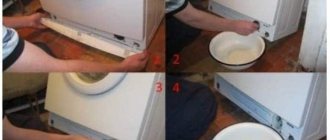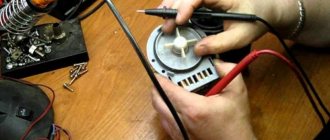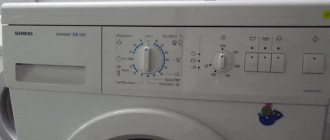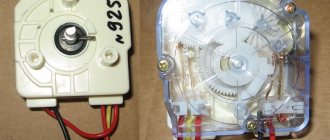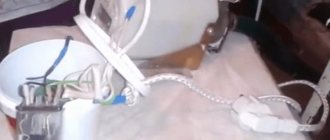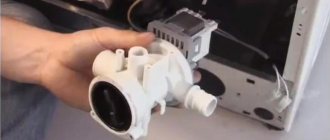In every modern apartment you can see an automatic washing machine in the kitchen or bathroom. Currently, manufacturers offer a huge number of different brands and models of washing units, which operate on the same principle, but are most often equipped with technological components of their own production.
Experienced craftsmen call the heart of the washing machine the drain pump, which ensures the normal functioning of the entire unit. Therefore, when a home assistant malfunctions, it is often necessary to know the types, classification and characteristics of pumps. Knowledge of the operating rules and features of caring for the washing machine pump will greatly extend the trouble-free service life of the entire unit.
Purpose
The washing machine pump performs one of the main functions in the correct and uninterrupted operation of the unit. The main role of using a drain pump is to remove dirty water from the washing machine tank. The entire washing cycle depends entirely on how this unit works, because the pump is involved in all washing modes (washing, rinsing, spinning and drying).
The need to periodically drain and collect water places a large load on the drain pump, so for trouble-free operation of the entire mechanism, you must follow the basic rules for operating the washing machine.
What will you need?
To repair an LG washing machine yourself, you will need to prepare all the necessary tools. You will also need spare parts for the device.
Tools
To carry out all the necessary work you will need the following devices:
- screwdriver;
- tool with a blunt blade;
- penknife;
- multimeter;
- pliers.
Spare parts
Repairing a branded washing machine in the event of a pump breakdown must be carried out armed with a number of spare parts. In this case, the following units will be needed:
- new drain pump;
- impeller;
- axis;
- contacts;
- pump sensor;
- cuff;
- special rubber gasket;
- closet.
When selecting the necessary replacement elements, you need to take into account that they must be ideal for the LG washing machine.
Ideally, you will need to remove the old drain and contact the store salesperson for help. The store employee should help you find suitable analogues. You can also navigate the selection of spare parts by finding out the serial numbers of the parts. They must be applied to all components of the pump located in the washing machine.
Drain pump device
Structurally, the drain pump (pump) for a washing machine is a low-power electric motor, on the shaft of which an impeller is mounted, which helps pump out used water.
The main components of the pump are:
- medium power electric motor;
- electric motor shaft;
- impeller;
- sealed casing in the form of a snail with two pipes.
One pipe of the housing is used to remove water from the washing machine tank, and the second is connected by a drain hose to the sewer.
Circulation pump
This is a more complex design that ensures fluid circulation in the system. This format can significantly reduce water consumption. The main task of the circulation pump is to drive water only in one direction, that is, along a closed path. Such devices can work in tandem with a conventional drain pump, which significantly increases the efficiency of the entire structure.
Circulation pumps are equipped with equipment in the premium segment, less often in the mid-budget segment. Moreover, every well-known manufacturer tries to improve the device, introducing something new and useful. Thus, the Samsung brand included a seal in the design of the pump, which prevents water from escaping beyond the main circuit. Thanks to this solution, the bearings always remain dry, and this significantly increases the service life of the product. The company also uses a proprietary lubricant that eliminates most of the problems associated with rubbing mechanisms. As a result, the pump operates trouble-free for many years, while maintaining stable performance. Other brands have similar solutions.
Pump for Samsung washing machine
Technical characteristics of the drain pump
The main characteristics of different models of washing machine drain pumps may vary depending on the power of the units.
Standard technical indicators are:
- productivity about 20 liters of water per minute;
- rated power of the electric motor is about 30 W;
- the motor winding has a resistance of about 160 Ohms;
- the ability to lift water up to a maximum of one meter;
- The water temperature should not be higher than 90 °C.
To protect the electric motor winding from overloads, a thermal relay is installed, which is designed to operate at a coil temperature of 150 °C.
Location of the drain pump and how to get to it
A broken washing machine can be sent to a service center for diagnosis and repair, but if you wish, you can deal with the problem on your own. Depending on the distinctive features of the model, the pump may be located in different places of the machine. General instructions in this situation recommend the following sequence of actions:
- De-energize the washing machine by unplugging it from the outlet.
- Shut off the water supply.
- Turn the device over so that the drain is on top.
- Unscrew and remove the top cover. Typically, the drain filter unwinds several turns.
- Place a container prepared in advance for the remaining water.
- Clean the filter mesh from accumulated debris.
After performing these simple manipulations, it becomes possible to examine in detail the internal mechanism of the equipment, since all the parts are located at the bottom of the device. For convenience, it is better to illuminate with a flashlight. If necessary, the impeller should be cleared of debris and try to carefully rotate it by hand - ideally, it should rotate with slight delays.
The easiest to inspect machines are those manufactured by Electrolux, Samsung, Candy, LG and Zanussi. Typically, their diagnosis is carried out through the bottom or by removing the rear panel. But Indesit, Siemens and Bosch lose in this matter - all the most important parts are located under the front cover of the machine. In such cases, you first need to remove the loading hatch, which is a rather lengthy and labor-intensive process.
Types of pumps
Currently, there are two types of drain pumps for washing machines:
1. The circulation pump is used mainly in premium washing units. Such a pump supplies washing liquid directly to the place of washing and produces forced circulation of water during the work process. Typically, a circulation pump is installed together with a simple drain pump that pumps out water. This design solution allows you to wash dirty laundry much more efficiently.
2. Cheaper models use an ordinary drain pump, which only removes liquid from the tank into the sewer system.
Also, drain pumps in different models of washing machines may differ in the shape of the volute and the type of filter that is located inside the housing.
The principle of operation of the washing machine
In modern automatic washing machines, water flows by gravity, that is, under water pressure from the tap to which the equipment is connected. Based on the software settings selected at the user’s discretion, the magnetic valve that allows water to pass through opens to allow the required amount of liquid into the working chamber.
The water level in the washing “drum” is controlled by a special sensor called a “pressostat”.
Passing through the detergent containers, the water mixes with them and enters the washing drum, where it remains throughout the entire washing process. When the washing is completed, the “waste” liquid flows through a special hose into the pump, which is present in the design of every automatic washing machine.
Main malfunctions of the drain pump
During the washing process, the washing machine pump is switched on several times, depending on the selected mode. Therefore, a large load on the parts of this important unit is the main reason for pump failure.
Typical drain pump malfunctions are:
- frequent activation of thermal protection of the electric motor winding;
- clogging of the impeller, which leads to its jamming;
- damage to the impeller blades by foreign objects;
- premature wear of the bushings located on the motor shaft;
- the pump impeller rotates or falls off the electric motor shaft;
- short circuit or broken motor winding turns.
All these breakdowns lead to repair of the washing machine pump. Typically, repair work can be carried out after minor faults occur, such as clogged impellers, as well as minor damage to the blades. Other breakdowns lead to a complete replacement of the washing machine pump.
Purpose of the pump
A typical solution includes an electric motor with an impeller and taps. On one side of the pump there is a pipe for liquid intake, and on the other there is a drain hose.
The main task of the device is to pump water into the system and then drain it at the command of the main processor. For example, in the rinsing mode, the machine requires a lot of liquid, while during the spin cycle it is completely useless.
If the pump is faulty, the processor will not be able to organize the normal operation of the modes, or the equipment will refuse to work at all. The design of the device cannot be called complex, as well as the principle of its operation. The vast majority of models have one of two solutions installed - drain or circulation.
Replacing the pump through the bottom of the washing machine
The drain pump is located at the bottom of the unit, under the tank. Only it can be accessed through the bottom of the washing machine or after removing the front panel.
The pump for a Samsung washing machine is replaced through the bottom of the unit.
Instructions for dismantling the drain pump are as follows:
- Be sure to unplug the washing machine from the electrical outlet.
- Shut off the water supply before disassembling.
- Carefully place the washing machine on its side. In this case, the pump should be on top of the unit.
- Release the bottom of the machine from the lower protective panel. For this purpose, it is necessary to remove the fastening latches.
- If there is a plastic protective casing for the pump, this element must also be removed.
- Near the pump valve you will see screws securing the unit, which need to be unscrewed.
- Carefully pull the pump towards you.
- Then disconnect the pump power cables.
- Over a previously prepared container, so as not to spill the remaining water, loosen the hose clamps.
- If the pump has a volute, then you need to disconnect it too. In the future, if there are no complaints about this element, then after cleaning the snail can be left.
Installing a new or repaired pump is carried out in the reverse order.
A similar method is used to dismantle the pump in washing machines Indesit, LG, Beko and some other models.
Main types of devices
Choosing the most optimal siphon will not be difficult due to the variety of similar products on the modern market. Mainly they differ:
- by the number of bends used;
- by installation method;
- according to form;
- and in size.
Sometimes you can find a siphon of such an unusual or intricate shape that it will be impossible to determine what type of device it is and how it can be used. The choice of pump should be approached very carefully, since the complexity of connecting the pump to the sewer system and its further operation will depend on this. With an outlet for a washing machine, some pumps look really unusual. However, it often looks like an ordinary siphon, which everyone has seen at least once under their own or a neighbor’s washstand. Additionally, it comes with a pipe or side outlet to which you can attach a drain hose. Belongs to the category of the simplest options, which at the same time are the least qualitative in terms of approach. There are cases when the machine is installed under a countertop with a washstand, but these cases are rather exceptions.
The branched siphon allows you to take care of double connections at the same time. It is a plastic tee. One outlet will be directed to the sewer pipe, while the rest will serve as containers for corrugated hoses. One will be directed to the sink, and the second will be connected to the washing machine. The siphon built into the wall has very insignificant dimensions due to the fact that most of it will be hidden in the wall by the sewer pipe. Only a small part of the housing with a connection for the drain hose will be visible. It can be equipped with several or only one branch at the same time. A relatively new invention is a siphon equipped with a check valve. This will help avoid many troubles in the event of a clog forming, blocking the return of liquid to the washing machine. A very popular device among apartment dwellers. Flat drain pumps are very convenient to use, since their dimensions allow them to be placed anywhere and at a short distance from the main device.
Removing the pump through the front panel
Replacing the pump of a Bosch, Siemens and some other brands of washing machines is done after removing the front panel of the unit, since the bottom of such machines is closed.
Dismantling the drain pump is carried out as follows:
- First of all, you need to remove the top cover of the unit. To do this, you need to unscrew the mounting screws on the back of the machine, and then push the cover away from you from the front panel.
- The next step is to dismantle the control panel. For this purpose, remove the tray for washing powder and unscrew the screws securing the panel. After removing the screws, the panel is carefully placed on the top of the unit so as not to damage the connecting wires.
- Under the plastic protective panel there is a drain valve, which must be carefully removed above the container to drain the remaining water.
- Then you need to remove the sealing collar from the loading hatch.
- Thus, by dismantling the front panel, we will gain access to the pump.
- Having unscrewed the mounting screws of the pump and the front wall, you can begin to dismantle the pump.
- Having loosened the clamps on the pump nozzles, remove the connecting hoses.
After completing all these operations, we inspect the pump and impeller. In case of minor breakdowns, we clean the pump parts from contamination. Installing a new drain pump is done in the reverse order.
In top-loading washing machines, the pump is removed through the rear wall.
DIY repair
How to remove the pump
To repair the pump yourself, you need to know where it is and how to get to it. In different washing machines it can be located behind the back wall, behind the front panel or at the bottom of the machine:
- for Zanussi and Electrolux the pump is located on the back of the machine, behind the rear panel;
- for AEG, Bosch, Siemens models - on the front side, behind the front panel;
- in Indesit, Samsung, Beko, Ardo, Whirpool, Candy, LG, Hotpoint Ariston machines - under the drum from the bottom of the machine (the bottom, which may be absent in some models or may be removable).
Let's consider the procedure depending on the location of the pump.
Under the centrifuge
- check the presence of water in the powder compartment;
- put the car on its side;
- if there is a bottom panel, unscrew the screws and remove it; if not, skip this step;
- loosen the pipe clamps and disconnect them from the pump body;
- disconnect all wiring;
- unscrew the fastening screws;
- get the pump;
- separate the panel that covers the drain filter.
Behind the front panel
- Unscrew the two screws from the back and slide the cover in the opposite direction from you;
- remove the top cover from the machine body;
- by pressing the latch in the center of the powder compartment, remove it;
- unscrew the screws behind the dispenser and on the opposite side;
- loosen the latches;
- remove the control panel;
- remove the bottom panel under the door;
- open the tank door and unscrew the two screws holding the door lock;
- remove the cuff clamp;
- Unscrew the screws around the perimeter of the panel and remove it from the body;
- loosen the pipe clamps and disconnect them from the body;
- disconnect all wiring;
- unscrew the fastening screws;
- get the pump.
Help: It is not necessary to completely disconnect the control module wires; it is enough to place the panel on the top of the machine body.
Behind the back panel
- disconnect the water supply hose to the machine from the body;
- Unscrew the screws from the back cover;
- loosen the ring that secures the pipe;
- Unscrew the screws that hold the pump, disconnect the power wires;
- remove the pump from the housing.
To start
IMPORTANT! Before starting self-repair, you must turn off the power to the washing appliance, turn off the water supply tap and drain all the water remaining in the machine.
For self-repair you will need:
- drain pump assembly;
- impeller;
- pulley;
- axis;
- contacts;
- pad;
- cuff;
- sensor.
Required tools for repair:
- wrench;
- screwdrivers;
- bucket for draining liquid
- multimeter (to check electrical functionality).
Removing the blockage
To remove the blockage, it is necessary to disassemble and clean the pump. Parsing order:
- remove the snail by unscrewing several screws;
- inspect the snail and pump with impeller;
- clean the impeller and volute from foreign objects;
- assemble the pump and install it in its original place.
To check, run the washing program, make sure that the machine does not make noise and pumps out water.
Repair parts
Remove the pump and inspect it for external damage. If they are not there, disassemble the part and check its insides. Most often, the impeller breaks: it flies off the axis. The pump turns on and makes sounds, but does not pump water. The impeller will have to be replaced. Next, inspect the rubber seals and moving parts of the pump, including the pulley. All spare parts must be replaced if there is the slightest sign of wear.
Features of some models
The Samsung, Elgie, Ardo, Indesit and Hotpoint Ariston machines do not have a panel that covers the bottom, so they have an easier way to access the pump.
In German brands - Bosch, Siemens, AEG - you can install universal Askoll type pumps or square ones with a latch. They are the most difficult to repair, since the bottom is closed and it is impossible to get to the bottom. You will need to remove the front wall.
Pump operating rules
In order for any complex technical unit to reach its service life, you need to monitor its condition and follow some additional recommendations from the washing machine manufacturer:
- Before washing, check the pockets in your clothes to prevent small objects from getting into the rotating components of the unit.
- Use only a special detergent for automatic machines, which contains anti-scale additives.
- It is advisable to install a filter on the water supply system so that small particles of rust from the pipes do not get inside the machine.
- It is better to soak very dirty laundry before washing.
Remember that if signs of a problem with your washing machine appear, you must immediately begin to identify and repair the problem. It is easier to replace a failed drain pump than to replace the entire unit in the future.
How to clean?
The pump cleaning operation consists of the fact that you will need to very carefully clean one component of the pump - the impeller. To fully clean the impeller, it will also need to be removed.
The process of removing the impeller is simple: using a screwdriver, you need to remove the screws that connect the 2 parts of the pump. When these parts are separated, you will see a small head. This will be the impeller. During operation of the unit, this head rotates, due to which water is drained.
Clean it of dirt, wool fibers, hair, threads and other debris and wipe the inner snail of the element. At the end of the event, assemble the pump, install it in place, also assemble and properly secure the other removed elements. When the device is finally assembled, perform a test wash. If water is filled and drained in accordance with the norm, and no knocks or noises are heard when the device is operating, then you have done everything correctly.
Don't forget about the filter. Not every time the pump is the cause of a water drainage failure. The machine may refuse to drain water due to a clogged drain filter.
You can clean the washing machine pump filter while dismantling the pump, since when you get to this element, you will still be removing the filter plug. Simply immediately remove all debris and foreign objects from it, and then remove the pump itself.
